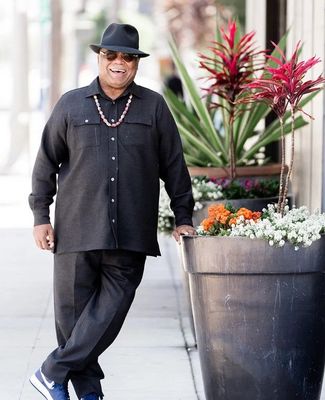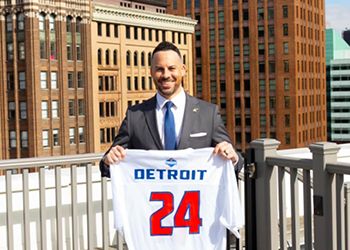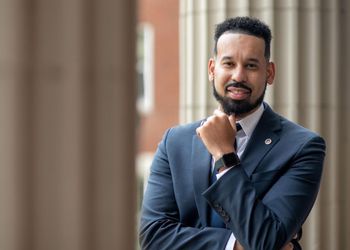A Potent Force

A Potent Force
January 20, 2023As my MSU graduation approached in 1972, I found myself in an odd place. Though an advertising major, a calling I came to after first considering a career in bioscience, I was actively discouraged from pursuing employment at a traditional advertising agency. At the time, African Americans did not work in general marketing and advertising. Like the Negro Leagues were to Major League Baseball, African Americans seeking employment in advertising had to take their game elsewhere.
After spending the first 15 years of my career in public relations and marketing, I knew fulfilling my desires for a career in advertising would mean striking out on my own. I reminded myself that I didn’t get an advertising education at MSU to exist outside the advertising world. I wanted in—and establishing my own firm provided the ticket.
That’s the basic history behind the founding of Muse Communications in 1988, but there’s more to the story.
Wanting to belong myself meant helping others belong as well. A big piece of my agenda at Muse included pursuing multicultural advertising, both inside our office and in the campaigns we crafted.
Though multicultural advertising is rather commonplace today, it was a foreign idea in the late 1980s when nearly all ethnic work existed in silos. Advertising was either Black or Asian or Hispanic. The worlds were disparate, not connected. Such would not be the case at Muse.
Our process, called “The Zone of Commonality,” focused on hiring people from multicultural backgrounds and leaned into casting individuals from multicultural backgrounds as well. We wanted to reflect the end consumers our clients wanted to reach. We then communicated to prospective clients the advantages of having diverse perspectives and faces represented, which included showing research verifying the incredible marketplace opportunity if inclusiveness was at the forefront.
Working on multicultural campaigns for the likes of Honda, Nike and Wells Fargo, we demonstrated the value of more inclusive advertising. Our clients, in fact, recognized it in bottom-line results, which elevated our profile and the value of multicultural advertising as a whole.
Inclusion is a potent force. When people see they belong, they feel empowered to act, re-envision their lives and chase new adventures. Through my own hunger to be included in a field that first captivated me some five decades ago, I became known as the “Father of Multicultural Advertising.” That passion earned me an induction into the American Advertising Federation’s Advertising Hall of Fame in 2022, and to this day, I remain committed to fostering opportunities in advertising for people of color.
Contributing Writer(s): Jo Muse, '72




